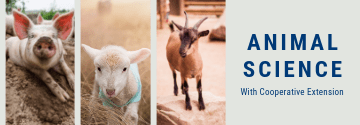Winter weather could be here sooner than we originally thought as a shot of much colder air will dip down and cover much of the country this week. That blast of cold air could include snow for some and frigid temperatures for others, according to U.S. Farm Report meteorologist Cindi Clawson.
For dairy producers, bitter temperatures present additional challenges when it comes to keeping dairy calves healthy, comfortable and growing. To combat potential cold stress, here are five tips to keep calves bright-eyed and bushy-tailed during colder weather:
Give Newborns a Quick Warm Up
Just like people, calves attempt to maintain a constant body temperature regardless of the outside temperature. Within a certain range of temperatures called the thermoneutral zone, calves can maintain body temperature without needing extra energy. When the temperature drops below the lower critical temperature, calves must use energy to support basic bodily functions and maintain their body temperature.
Here are three ways to ensure newborn calves stay at a constant, warm temperature:
- Turn on the heater – Consider using a calf warmer or warming roomto quickly dry newborn calves and help increase body temperature.
- Deep and dry bedding – When calves are laying down, a good rule of thumb is to provide enough bedding that one should not be able to see the feet and legs of the calf.
- Calf blankets – Even though they add extra expense, calf blankets are reusable and provide an extra layer of protection for calves. Make sure to adequately clean and dry blankets between uses.
Consider Adding Another Meal
The most critical, and most expensive, period of calf growth in raising dairy calves is the pre-weaning period. During this period calves are highly susceptible to cold stress with a lower critical temperature of 50°F for newborn calves and 32°F for older calves.
In cold weather, feed more milk or milk replacer daily if using individual bottle or pail feedings in one of three ways:
1) Add a feeding or a third meal.
2) Increase the volume fed by a third.
3) Increase the total solids fed.
Don’t Forget the Water!
Another key to feeding calves in cold weather is to provide all liquids at 105°F target temperature for consumption. Always offer calves clean, fresh water in addition to milk or milk replacer. With regard to free-choice water, this means offering warm water several times per day in cold weather.
Step Up the Starter
The sooner calves start eating grain, the more benefit they will get in terms of generating heat. Anything we can do to encourage starter consumption will have a positive effect on calves’ ability to withstand cold temperatures. Offer small amounts of starter during the first week of life and be sure to have water available to all calves because drinking water stimulates starter intake.
When to Wean?
Cold stress can result in calves turning to stored body fat to generate body heat, essentially losing weight. In addition, calves experiencing cold stress will have compromised immune systems making them more susceptible to disease. Weaning calves during extreme cold conditions provides added stress to the animal and consideration should be given to delaying weaning until temperatures are less extreme.


